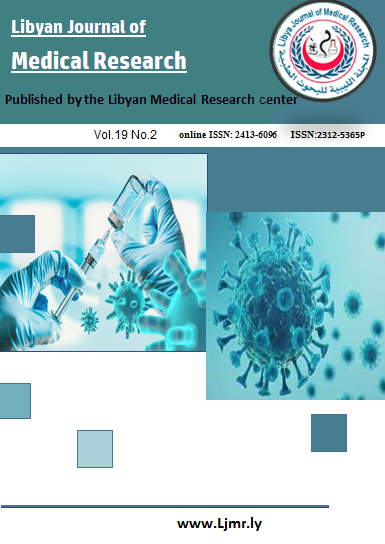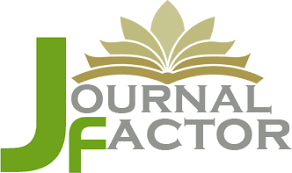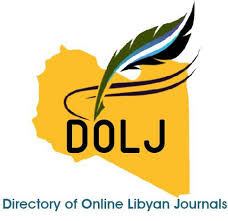Protective effect of Purslane on liver from reserpine-induced Hepatic toxicity in mice
DOI:
https://doi.org/10.54361/LJMR.19.2.05Keywords:
Purslane, Portulaca oleracea, Reserpine, hepatic, liver, toxicity, MiceAbstract
Purslane (Portulaca oleracea) is a universal species with a broad range of biological activities. This study aims to estimate the hepatoprotective effects of purslane ethanolic and aqueous extracts on hepatotoxicity induced by reserpine. Methods: Mice were divided into five groups and treated for four weeks. The first group is a negative control with no treatment. The second group is a positive control treated only with reserpine. The other groups were treated with reserpine and also treated with Escitalopram or purslane ethanolic extract, or purslane aqueous extract. Blood serum was used to estimate the concentrations of Alanine aminotransferase (ALT), Aspartate aminotransferase (AST), Albumin, and Globulin.
Results: The data showed that the serum concentrations of ALT and AST were significantly elevated in all treated groups compared to the negative control group. In contrast, these values were significantly lower than the positive control group. Moreover, a significant decrease was exhibited in serum albumin and globulin in all treated groups as compared to the negative control group, and at the same time, there was a significant increase as compared to the positive control group.
Conclusion: Purslane ethanolic and aqueous extracts have a partial protection from liver toxicity induced by reserpine.
Downloads
References
1. Al-Newani HRH. Systematics significance of morphological and anatomical diversity of Portulaca oleracea. Iraqi J Agric Sci. 2019;50(5).
2. Kumar A, Sreedharan S, Kashyap AK, Singh P, Ramchiary N. A review on bioactive phytochemicals and ethnopharmacological potential of purslane (Portulaca oleracea L.). Heliyon. 2022;8(1).
3. Ranganath D, Gajendra A, Clyde S, Silva D. Extraction of Reserpine from Raoulfia vommotoria” students project. Int J Innov Res Sci. 2013;4:3–9.
4. Ranganath D, Raj LA. Studies on Extraction Behaviour of Reserpine during Reverse Micellar Extraction from Rauwolfia Vomitoria. Int J Innov Res Sci. 2015;4(3):1344–50.
5. Henry JP, Sagne C, Botton D, Isambert MF, Gasnier B. Molecular pharmacology of the vesicular monoamine transporter. In: Advances in Pharmacology. Elsevier; 1997. p. 236–9.
6. Bilska A, Dubiel M, Sokołowska-Jez M, Lorenc-Koci E, Włodek L. Alpha-lipoic acid differently affects the reserpine-induced oxidative stress in the striatum and prefrontal cortex of rat brain. Neuroscience. 2007;146(4):1758–71.
7. Gülçin I, UĞUZ MT, Oktay M, Beydemir Ş, KÜFREVİOĞLU Öİ. Evaluation of the antioxidant and antimicrobial activities of clary sage (Salvia sclarea L.). Turkish J Agric For. 2004;28(1):25–33.
8. Wanyin W, Liwei D, Lin J, Hailiang X, Changquan L, Min L. Ethanol extract of Portulaca oleracea L. protects against hypoxia-induced neuro damage through modulating endogenous erythropoietin expression. J Nutr Biochem. 2012;23(4):385–91.
9. Nkosi CZ, Opoku AR, Terblanche SE. Effect of pumpkin seed (Cucurbita pepo) protein isolate on the activity levels of certain plasma enzymes in CCl4‐induced liver injury in low‐protein fed rats. Phyther Res An Int J Devoted to Pharmacol Toxicol Eval Nat Prod Deriv. 2005;19(4):341–5.
10. Ibrahim M, Anjum A. Regenerative Effect of Rat Embryonic Stem Cells Against CCl4 Induced Liver Damage in Wister Rats. 2012;
11. Lakshmi Devi S, Anuradha C V. Mitochondrial damage, cytotoxicity and apoptosis in iron-potentiated alcoholic liver fibrosis: amelioration by taurine. Amino Acids. 2010;38:869–79.
12. Giannini EG, Testa R, Savarino V. Liver enzyme alteration: a guide for clinicians. Cmaj. 2005;172(3):367–79.
13. Zhu Q, Gu L, Wang Y, Jia L, Zhao Z, Peng S, et al. The role of alpha-1 and alpha-2 adrenoceptors in restraint stress-induced liver injury in mice. PLoS One. 2014;9(3):e92125.
14. Li Y, Sun Y, Ma X, Xue X, Chai X, Wang W, et al. Effect of reserpine on chronic unpredictable mild stress of rat model. Biomed Res. 2014;25(1).
15. Ahmed RF, Abdel-Rahman RF, Abdallah HMI, Saleh DO, Farid OAHA, Hessin AF. Antidepressant-like effect of resveratrol in a subchronic model of depression. J Arab Soc Med Res. 2014;9(2):48–53.
16. Fernández G, Mena M-P, Arnau A, Sánchez O, Soley M, Ramírez I. Immobilization stress induces c-Fos accumulation in liver. Cell Stress Chaperones. 2000;5(4):306.
17. Sheweita SA, Mashaly S, Newairy AA, Abdou HM, Eweda SM. Changes in oxidative stress and antioxidant enzyme activities in streptozotocin‐induced diabetes mellitus in rats: Role of Alhagi maurorum extracts. Oxid Med Cell Longev. 2016;2016(1):5264064.
18. Afzal M, Safer AM, Al‐Bloushi S. CoQ9 potentiates green tea antioxidant activities in Wistar rats. BioFactors. 2005;25(1‐4):255–9.
19. Koneri R, Balaraman R, Firdous KM V, Kumar M. Hepatoprotective effects of Momordica Cymbalaria Fenzl. against carbon tetrachloride induced hepatic injury in rats. Pharmacologyonline. 2008;1:365–74.
20. Zakizadeh E, Faghihimani E, Saneei P, Esmaillzadeh A. The effect of purslane seeds on biomarkers of oxidative stress in diabetic patients: A randomized controlled cross-over clinical trial. Int J Prev Med. 2015;6(1):95.
21. Şahin E, Gümüşlü S. Immobilization stress in rat tissues: alterations in protein oxidation, lipid peroxidation and antioxidant defense system. Comp Biochem Physiol Part C Toxicol Pharmacol. 2007;144(4):342–7.
22. Oliveira I, Valentão P, Lopes R, Andrade PB, Bento A, Pereira JA. Phytochemical characterization and radical scavenging activity of Portulaca oleraceae L. leaves and stems. Microchem J. 2009;92(2):129–34.
23. Hozayen W, Bastawy M, Elshafeey H. Effects of aqueous purslane (Portulaca oleracea) extract and fish oil on gentamicin nephrotoxicity in albino rats. Nat Sci. 2011;9(2):47–62.
24. Al Howiriny TA. PROTECTIVE EFFECT OF’PURSLANE’ON RAT LIVER INJURY INDUCED BY CARBON TETRACHLORIDE. 2008;
25. Sharmila Banu G, Kumar G, Murugesan AG. Effect of ethanolic leaf extract of Trianthema portulacastrum L. on aflatoxin induced hepatic damage in rats. Indian J Clin Biochem. 2009;24:414–8.
26. Yamaki J, Venkata KCN, Mandal A, Bhattacharyya P, Bishayee A. Health-promoting and disease-preventive potential of Trianthema portulacastrum Linn.(Gadabani)—An Indian medicinal and dietary plant. J Integr Med. 2016;14(2):84–99.
27. El-Sayed M-IK. Effects of Portulaca oleracea L. seeds in treatment of type-2 diabetes mellitus patients as adjunctive and alternative therapy. J Ethnopharmacol. 2011;137(1):643–51.
28. Okafor IA, Ayalokunrin MB, Orachu LA. A review on Portulaca oleracea (purslane) plant-its nature and biomedical benefits. 2014;
29. Oyedeji KO, Bolarinwana AF. Evaluation of antifertility and teratogenic effects of crude extracts of Portulaca oleracea in male and female albino rats. Asian J Pharm Clin Res. 2013;6:217–20.
30. Modaresi M. Effect of Purslane (Portulaca oleracea) extracts on the electrophoretic pattern of blood proteins in mice. Intern Med Today. 2014;19(4):206–11.
31. Voican CS, Martin S, Verstuyft C, Corruble E, Perlemuter G, Colle R. Liver function test abnormalities in depressed patients treated with antidepressants: a real-world systematic observational study in psychiatric settings. PLoS One. 2016;11(5):e0155234.
32. Dale E, Bang-Andersen B, Sánchez C. Emerging mechanisms and treatments for depression beyond SSRIs and SNRIs. Biochem Pharmacol. 2015;95(2):81–97.
Downloads
Published
Issue
Section
License
Copyright (c) 2025 Naema Ibolgasm Alazabi, Taher Abdelhameed (Author)

This work is licensed under a Creative Commons Attribution-NonCommercial-NoDerivatives 4.0 International License.
Open Access Policy
Libyan journal of medical Research (LJMR).is an open journal, therefore there are no fees required for downloading any publication from the journal website by authors, readers, and institution.
The journal applies the license of CC BY (a Creative Commons Attribution 4.0 International license). This license allows authors to keep ownership f the copyright of their papers. But this license permits any user to download , print out, extract, reuse, archive, and distribute the article, so long as appropriate credit is given to the authors and the source of the work.
The license ensures that the article will be available as widely as possible and that the article can be included in any scientific archive.
Editorial Policy
The publication of an article in a peer reviewed journal is an essential model for Libyan journal of medical Research (LJMR). It is necessary to agree upon standards of expected ethical behavior for all parties involved in the act of publishing: the author, the journal editorial, the peer reviewer and the publisher.
Any manuscript or substantial parts of it, submitted to the journal must not be under consideration by any other journal. In general, the manuscript should not have already been published in any journal or other citable form, although it may have been deposited on a preprint server. Authors are required to ensure that no material submitted as part of a manuscript infringes existing copyrights, or the rights of a third party.
Authorship Policy
The manuscript authorship should be limited to those who have made a significant contribution and intellectual input to the research submitted to the journal, including design, performance, interpretation of the reported study, and writing the manuscript. All those who have made significant contributions should be listed as co-authors.
Others who have participated in certain substantive aspects of the manuscript but without intellectual input should only be recognized in the acknowledgements section of the manuscript. Also, one of the authors should be selected as the corresponding author to communicate with the journal and approve the final version of the manuscript for publication in the LJMR.
Peer-review Policy
- All the manuscripts submitted to LJMR will be subjected to the double-blinded peer-review process;
- The manuscript will be reviewed by two suitable experts in the respective subject area.
- Reports of all the reviewers will be considered while deciding on acceptance/revision or rejection of a manuscript.
- Editor-In-Chief will make the final decision, based on the reviewer’s comments.
- Editor-In-Chief can ask one or more advisory board members for their suggestions upon a manuscript, before making the final decision.
- Associate editor and review editors provide administrative support to maintain the integrity of the peer-review process.
- In case, authors challenge the editor’s negative decision with suitable arguments, the manuscript can be sent to one more reviewer and the final decision will be made based upon his recommendations.












